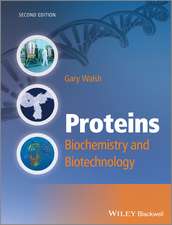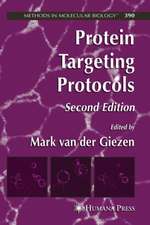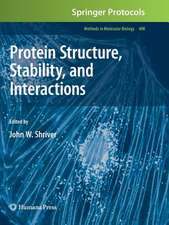Hemoglobin: Insights into Protein Structure, Function, and Evolution
Autor Jay F. Storzen Limba Engleză Paperback – 4 dec 2018
| Toate formatele și edițiile | Preț | Express |
|---|---|---|
| Paperback (1) | 324.16 lei 10-16 zile | |
| OUP OXFORD – 4 dec 2018 | 324.16 lei 10-16 zile | |
| Hardback (1) | 617.16 lei 10-16 zile | |
| OUP OXFORD – 4 dec 2018 | 617.16 lei 10-16 zile |
Preț: 324.16 lei
Preț vechi: 369.35 lei
-12% Nou
Puncte Express: 486
Preț estimativ în valută:
62.04€ • 64.53$ • 51.21£
62.04€ • 64.53$ • 51.21£
Carte disponibilă
Livrare economică 13-19 martie
Preluare comenzi: 021 569.72.76
Specificații
ISBN-13: 9780198810698
ISBN-10: 0198810695
Pagini: 256
Ilustrații: Over 140 illustrations
Dimensiuni: 190 x 248 x 13 mm
Greutate: 0.59 kg
Editura: OUP OXFORD
Colecția OUP Oxford
Locul publicării:Oxford, United Kingdom
ISBN-10: 0198810695
Pagini: 256
Ilustrații: Over 140 illustrations
Dimensiuni: 190 x 248 x 13 mm
Greutate: 0.59 kg
Editura: OUP OXFORD
Colecția OUP Oxford
Locul publicării:Oxford, United Kingdom
Notă biografică
Jay Storz is the Susan J. Rosowski Professor of Biology at the University of Nebraska. His research is motivated by questions about mechanisms of protein evolution, gene family evolution, and the genetic basis of biochemical and physiological adaptation. Professor Storz's work is supported by the National Institutes of Health and the National Science Foundation.





























